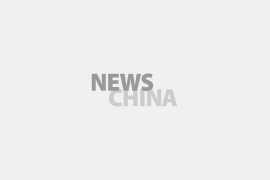Since the Trump administration launched its “Liberation Day” tariffs on April 2, investors, traders and consumers, including those in the US, have experienced shock waves from the financial, commodities and gold markets. Major international institutions have lowered their growth forecasts for the 2025 world economy.
The pressure weighs on China as the world’s second-largest economy and one of the top partners of two-way trade and investment with the US, and in particular, as the main target of the staggering tariffs.
China is clearly aware that the key to deal with the challenge is to consolidate its own economic position. It has already taken measures to stabilize market expectations. In response to the recent volatility in the stock market, major State investors, notably Central Huijin Investment, announced it has increased holdings of China’s stock market shares. The People’s Bank of China (PBoC), China’s central bank, also stated it stands ready to provide ample relending support to Central Huijin when necessary, laying the institutional groundwork for a full-scale stabilization fund. With structural upgrades across industries, enhanced innovation-driven growth, ample market liquidity and improved listed company quality, China’s stock market increasingly appeals to international investors.
Moreover, China’s monetary and fiscal policies as well as financial tools have become more sophisticated and mature. The central bank has refined its ability to manage liquidity through targeted rate adjustments and reserve requirement ratio tweaks. Fiscal policy has grown more agile, with expanded bond issues for critical infrastructure and green-energy projects.
More importantly, China will continue to tackle its challenges at home. Weak domestic demand has been a stubborn drag on growth. With the recent stimulus package, there are signs that domestic demand is on the rise. Official data showed that total retail sales of consumer goods in the first two months of 2025 grew by 4 percent, 0.5 percentage points higher than the same period last year. There is more potential to further unlock household spending by strengthening wage growth mechanisms, stabilizing the property market and expanding social safety nets.
In addition, amid weakening external demand, China can recalibrate its fiscal expenditure structure by increasing investments in innovation-driven sectors, such as R&D, education and healthcare, while encouraging private capital participation in social welfare projects to alleviate fiscal burdens. There are a lot of investment opportunities in infrastructure projects with long-term economic dividends like transportation networks, clean energy systems and digital infrastructure, while avoiding sectors already at overcapacity and low-return, short-gestation projects.
With a more consolidated domestic economy, China should strengthen ties with major trade partners such as the EU and ASEAN, positioning itself as a stabilizing force and demonstrating that its market remains open and its commitment to multilateral cooperation is unwavering. The trade war is not a bilateral one for any economy. As the restructuring of world trade landscape and international supply chains is inevitable, it is a critical time for China to strengthen its economic position and cooperation with other economies to secure sustained growth of the world economy.

 Old Version
Old Version